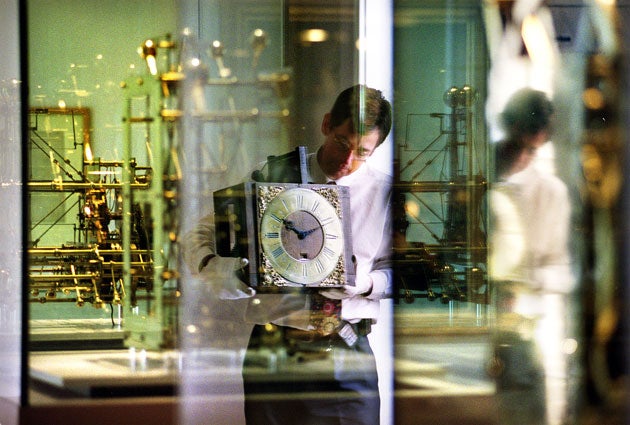Longitude pioneer was not a 'lone genius'
Experts believe that master clockmaker John Harrison must have had highly skilled help in creating his revolutionary sea clock

He was the lone genius who spent years locked away fiddling with tiny springs and coils to create the world's first global positioning instrument, and so revolutionised world travel. At least that's the official history of longitude, made famous by Dava Sobel's best-selling story of the master clockmaker John Harrison.
Now research from the Royal Observatory in Greenwich – the home of the meridian line from which longitude is measured – has cast doubt on that version of events.
The story of Harrison, as told by Sobel, captured the world's imagination when it was published in 1995. The book became a science-history best-seller, spawning a television adaptation in 2000 starring Michael Gambon and Jeremy Irons.
It told how the world's sailing powers were hindered by their inability to gauge how far east or west they were. In 1714 the British government put up a reward of £20,000 to whomever could solve the problem of how to accurately work out longitude.
Harrison's solution was simple. If a sailor could tell when it was noon where he was at sea by observing the sun, and also know the time in London, the time difference would tell him how far east or west he was.
The only problem was that accurate watches did not exist, and pendulums did not cope well with the swaying motion of a ship.
Harrison eventually came up with a watch-type device in the 1750s after going through various prototypes which, it had been believed, he made entirely on his own, even to the extent of learning how to work brass.
Those prototypes are now at the Royal Observatory, and the first, called H1, made in 1735 and still working, was recently dismantled by senior horologist Jonathan Betts to replace a broken part.
He said that after examining the intricate brass parts it became obvious that Harrison could not have made them without the help of a master brass-smith.
"I'm a dedicated Harrison fan," he said. "But the idea that he was a lone genius needs re-examining. Dava Sobel's wonderful book has left some readers with the impression that Harrison worked entirely alone. This is not the case. He had helpers.
"It has always been thought that he taught himself how to work brass, and he did to a degree. But he couldn't have obtained that level of skill without help. The people or person who made those parts had to be extremely skilled in their own right and it would have taken such a long time to complete.
"We're trying to revise the view that he worked alone by saying that's not the whole story. We're not saying he wasn't a genius."
It is the first time the clock has been dismantled since 1961 when it was refurbished after being neglected during the war. Then, however, it was worked on by clockmakers, rather than historians.
Sobel said she welcomed Mr Betts's research, but it didn't alter her view that Harrison was a "lone genius".
"It was Harrison who conceived the sea clocks," she said. "If he farmed out parts of the timekeepers' construction, that takes nothing away from the beauty of his conception, or the secretive style in which he worked."
Join our commenting forum
Join thought-provoking conversations, follow other Independent readers and see their replies
Comments